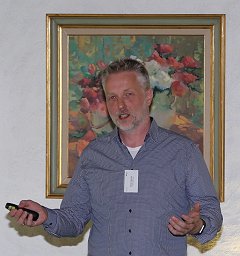Did JHotDraw Respect the Law of Good Style?: A deep dive into the nature of false positives of bad code smells
Fri 26 Mar 2021 17:00 - 17:30 at Virtual Space B - Session 19 Chair(s): Mariana Marasoiu
Developers need to make a constant effort to improve the quality of their code if they want to stay productive. Tools that highlight code locations that could benefit from refactoring are thus highly desirable. The most common name for such locations is “bad code smell”. A number of tools offer such quality feedback and there is a substantial body of related research.
However, all these tools, including those based on Machine Learning, still produce false positives. Every single false positive shown to the developer places a cognitive burden on her and should thus be avoided. The literature discusses the choice of metric thresholds, the general subjectivity of such a judgment and the relation to conscious design choices, “design ideas”.
To examine false positives and the relation between bad smells and design ideas, we designed and conducted an exploratory case study. While previous research presented a broad overview, we have chosen a narrow setting to reach for even deeper insights: The framework JHotDraw had been designed so thoughtfully that most smell warnings are expected to be false positives. Nevertheless, the “Law of Good Style”, better known as the “Law of Demeter”, is a rather restrictive design rule so that we still expected to find some potential bad smells, i.e. violations of this “Law”.
This combination led to 1215 potential smells of which at most 42 are true positives. We found generic as well as specific design ideas that were traded for the smell. Our confidence in that decision ranged from high enough to very high. We were surprised to realize that the smell definition itself required the formulation of constructive design ideas. Finally we found some smells to be the result of the limitation of the language and one could introduce auxiliary constructive design ideas to compensate for them.
The decision whether a potential smell occurrence is actually a true positive was made very meticulously. For that purpose we took three qualities that the smell could affect negatively into account and we discussed the result of the recommended refactorings. If we were convinced that we had found a false positive, we described the relationships with design ideas.
The realization that not only general design ideas but also specific design ideas have an influence on whether a potential smell is a true positive turns the problem of false positives from a scientific problem (“What is the true definition of the smell?”) to a engineering problem (“How can we incorporate design ideas into smell definitions?”). We recommend to add adaptation points to the smell definitions. Higher layers may then adapt the smell for specific contexts. After adaptation the tool may continuously provide distinct and precise quality feedback, reducing the cognitive load for the developer and preventing habituation. Furthermore, the schema for the discussion of potential smells may be used to elaborate more sets of true and false smell occurrences. Finally, it follows that smell detection based on machine learning should also take signs of design ideas into account.
Wed 24 MarDisplayed time zone: Belfast change
17:30 - 19:00 | |||
17:30 30mLive Q&A | Did JHotDraw Respect the Law of Good Style?: A deep dive into the nature of false positives of bad code smells Research Papers Daniel Speicher Bonn-Aachen International Center for Information Technology, B-IT DOI Media Attached | ||
18:00 30mLive Q&A | Advanced Join Patterns for the Actor Model based on CEP Techniques Research Papers Humberto Rodriguez Avila Vrije Universiteit Brussel, Joeri De Koster Vrije Universiteit Brussel, Belgium, Wolfgang De Meuter Vrije Universiteit Brussel DOI Media Attached | ||
18:30 30mLive Q&A | Finding Bugs with Specification-Based Testing is Easy! Research Papers DOI Media Attached | ||
Fri 26 MarDisplayed time zone: Belfast change
17:00 - 17:30 | |||
17:00 30mLive Q&A | Did JHotDraw Respect the Law of Good Style?: A deep dive into the nature of false positives of bad code smells Research Papers Daniel Speicher Bonn-Aachen International Center for Information Technology, B-IT DOI Media Attached | ||
